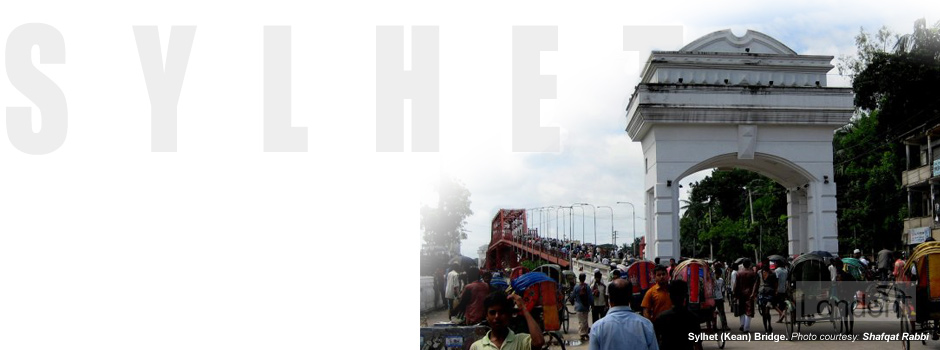
Introducing... Sylhet
Located on the banks of the Surma nodi, Sylhet city has a growing population of 500,000 people while also having a high population density. It is surrounded by Indian states of Meghalaya in the north, Assam in the east, Tripura in the south and the Bangladesh districts of Netrokona, Kishoregonj and Brahmanbaria in the west.
The area covered by Sylhet Division - also known as 'Greater Sylhet' - is 12,569 km², which is about 8% of the total land area of Bangladesh.
Beyond the Muslim (81%), Hindu (17%) and Buddhist and Christian (less than 1%) population which constitute the vast majority of Sylhetis, there are also more than 100,000 indigenous people - making up 1.5% of Sylhet Division’s population. The main ethnic groups in Sylhet are Khasi, Manipuri, Garo, Patro, Bishnupriya, Tripura and Santal. They are spread out throughout Sylhet and generally live below the poverty line.
Sylhet Division ('Sylhet Bibhag' in Bengali) is commonly referred to as just 'Sylhet'. This can arouse confusion, specially amongst non-Sylhetis since the city is called Sylhet, a district (zilla) is also called Sylhet and now the division is also called Sylhet!
Greater Sylhet is made up of four zillas (districts) - Sylhet, Sunamganj, Moulvi Bazaar, and Habiganj - and 38 thanas/upazillas (sub-districts), 334 union parishad, and 10,185 villages. It has approximately over 8 million people, which is less than 7% of the total population of Bangladesh.
13 thanas/upazillas (sub-district) of Sylhet Zilla (District)
- Balaganj
- Beanibazar
- Bishwanath
- Companiganj
- Fenchuganj
- Golapganj
- Gowainghat
- Jaintiapur
- Kanaighat
- Osmani Nagar
- Sylhet Sadar
- South (Dakhin) Surma
- Zakiganj
Sylhet Sadar is the largest of these thirteen upazillas.
Map of Sylhet

Sylhet from the air!
Important information, tips, hints, ...ittadhi
- Sylhet city's official website: www.sylhetcitycorporationbd.com
- Sylhet district's official website: www.dcsylhet.gov.bd
- Osmani International Airport telephone: 741532-42
- Hospital telephone:
- Railway: 843201-10
- Police Control Room: 639022
- Shops opening hours: 11am - 7pm everyday except Friday when they're closed.
- Coach station: located near Kean Bridge.
- Shah Paran mazar: located approximately 3 miles east of city centre. There's no top class hotel nearby so most people wishing to visit it for few days will have to travel into the city for residence.
- Traffic manned by police: traffic warden operate busy crossroads e.g. Amberkhana Point, Chowatta Point. There are very few or no traffic lights.
May Allah bless Sylhet and our People. Ameen.

